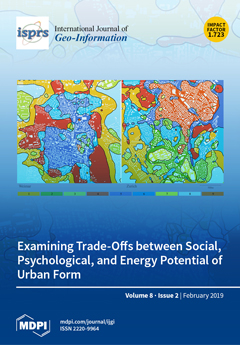There exists a sort of dynamic geographic phenomenon in the real world that has a property which is maintained from production through development to death. Using traditional storage units, e.g., point, line, and polygon, researchers face great challenges in exploring the spatial evolution
[...] Read more.
There exists a sort of dynamic geographic phenomenon in the real world that has a property which is maintained from production through development to death. Using traditional storage units, e.g., point, line, and polygon, researchers face great challenges in exploring the spatial evolution of dynamic phenomena during their lifespan. Thus, this paper proposes a process-oriented two-tier graph model named
PoTGM to store the dynamic geographic phenomena. The core ideas of
PoTGM are as follows. 1) A dynamic geographic phenomenon is abstracted into a process with a property that is maintained from production through development to death. A process consists of evolution sequences which include instantaneous states. 2)
PoTGM integrates a process graph and a sequence graph using a node–edge structure, in which there are four types of nodes, i.e., a process node, a sequence node, a state node, and a linked node, as well as two types of edges, i.e., an including edge and an evolution edge. 3) A node stores an object, i.e., a process object, a sequence object, or a state object, and an edge stores a relationship, i.e., an including or evolution relationship between two objects. Experiments on simulated datasets are used to demonstrate an at least one order of magnitude advantage of
PoTGM in relation to relationship querying and to compare it with the Oracle spatial database. The applications on the sea surface temperature remote sensing products in the Pacific Ocean show that
PoTGM can effectively explore marine objects as well as spatial evolution, and these behaviors may provide new references for global change research.
Full article





